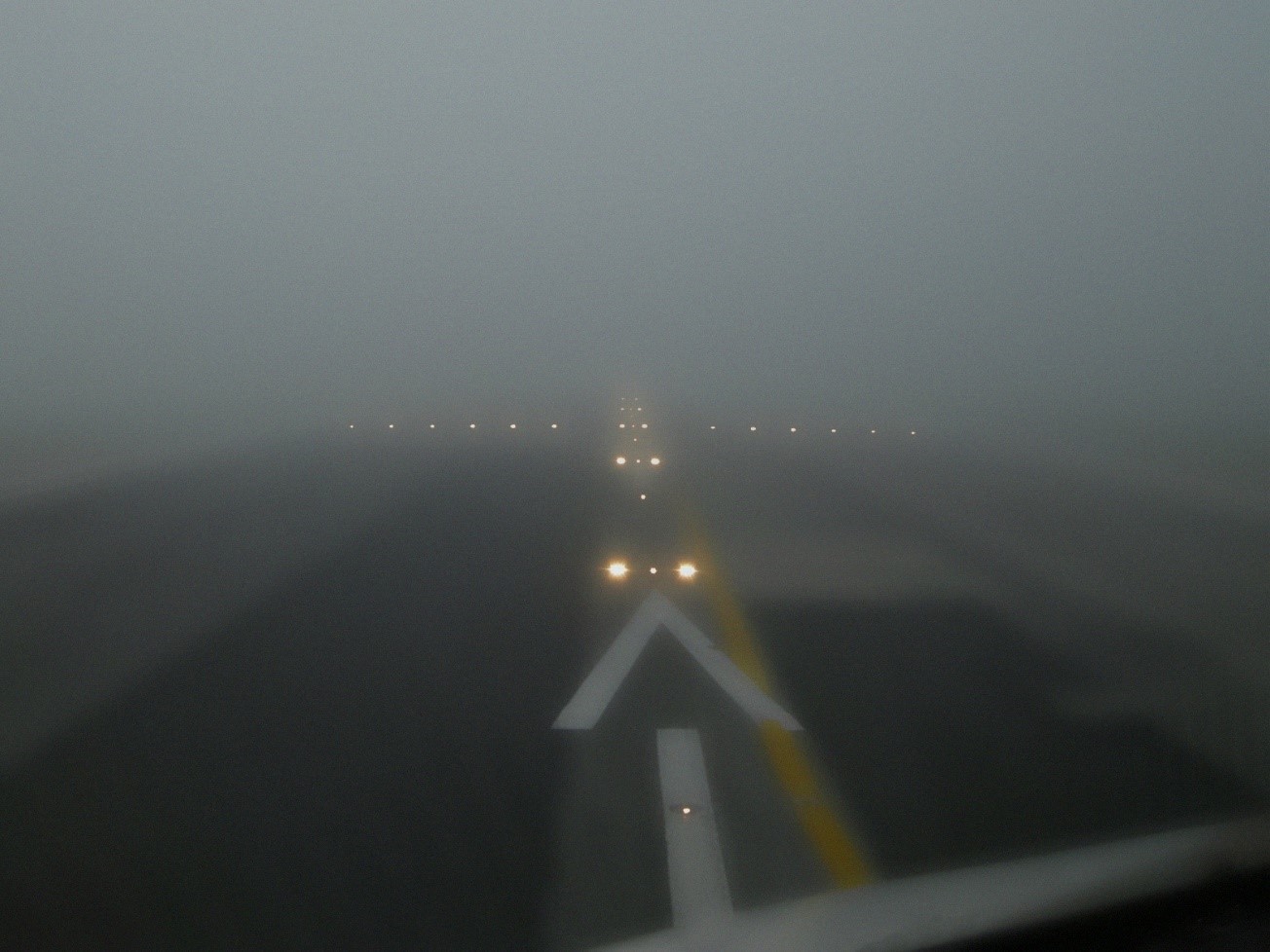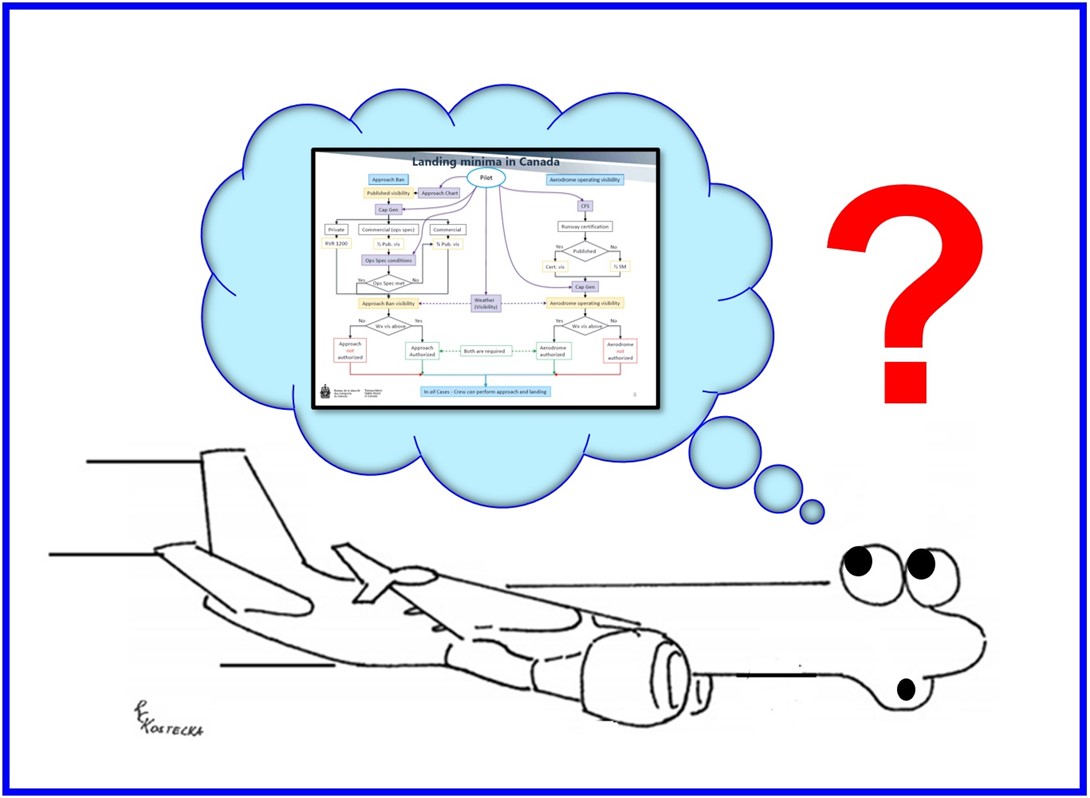by Robert Kostecka, Inspector Flight Standards Division, Civil Aviation, Transport Canada
Pilots are trained to know that for flight operations to be conducted safely, they need to understand and comply with their aircraft’s limitations. For the same safety imperative, pilots operating under instrument flight rules (IFR) also need to understand and comply with the aerodrome’s limitations. One of these aerodrome limitations—which is necessary to provide a recognized level of safety—is runway level of service.
The regulations reflect this safety requirement. Paragraph 602.96(2)(b) of the Canadian Aviation Regulations (CARs) requires that before taking off from, landing at or otherwise operating an aircraft at an aerodrome, the pilot in command of the aircraft needs to be satisfied that the aerodrome is suitable for the intended operation. Runway level of service is an important element in the determination of the suitability of an aerodrome for IFR operations.
Up to now, runway level of service visibility requirements have not been aligned with the visibility requirements for the take-off and approach/landing phases of flight. This lack of alignment has resulted in undue complexity and has imposed increased workload and unnecessary distraction for pilots during critical phases of flight.
The need to address this complexity is reflected in Transportation Safety Board (TSB) Recommendation A20-01: “that the Department of Transport review and simplify operating minima for approaches and landings at Canadian aerodromes.” Simplifying these requirements is also supported by the feedback that Transport Canada has received from pilots and operators.
To better understand this important safety issue and the steps that are being taken to address the identified opportunities for improvement, this article will outline:
- an overview of runway level of service: the functions it is intended to serve, how it is determined and how this information is made available;
- the situation today: an explanation of our current hierarchy of visibility reports and the opportunities for improvement; and
- the way forward: the solutions that are being implemented to address the identified safety issues.
Overview of runway level of service
Runway level of service visibility requirements have been established to ensure that pilots have adequate visual cues to:
- establish and maintain situational awareness (i.e., allow pilots to know where they are on the aerodrome); and
- recognize and avoid other ground traffic, including other aircraft and/or vehicles (i.e., "see and avoid").
Runway level of service visibility requirements have been established to ensure that pilots have adequate visual cues to: establish and maintain situational awareness (i.e., allow pilots to know where they are on the aerodrome); and recognize and avoid other ground traffic, including other aircraft and/or vehicles (i.e., "see and avoid")
Source : Lisbon's Runway 21.jpg—Wikimedia Commons
This important limitation is applicable anytime an aircraft is manoeuvring on the ground, including pushback, taxi prior to take-off, take-off, approach/landing and taxi after landing.
The aerodrome operator is responsible for establishing the level of service for their aerodrome and for ensuring that the aerodrome is equipped and/or operated accordingly. These responsibilities are stipulated in TP 312–Aerodrome Standards and Recommended Practices and section 302.07 of the CARs. This critical visibility value is established in consideration of:
- Aerodrome infrastructure requirements, including (but not necessarily limited to):
- markings and lighting for taxiways and runways (things that are visible to pilots), and
- runway lighting circuitry and standby power requirements (things that are less obvious to pilots); and
- Aerodrome specific operating procedures, including:
- reduced visibility operations plan (RVOP), and
- low visibility operations plan (LVOP).
The visibility specified as the runway level of service is applicable to individual runways and to the taxiways that are used when taxiing to and from the specified runway. In some cases, for reduced and/or low visibility operations, specific taxiways are identified to support the runway level of service.
The runway level of service is published in the Canada Flight Supplement (CFS). It may also be published in the Canada Air Pilot (CAP) or the Restricted Canada Air Pilot (RCAP). In the CFS, CAP and RCAP, the runway level of service is always expressed as runway visual range (RVR) (with corresponding ground visibility, where applicable), even for those runways that are not equipped with RVR sensors. This terminology is used for consistency with the provisions in the CARs and to align with the specific approvals (SAs) that authorize operators to conduct of take-offs and approaches during reduced and low visibility conditions.
If no RVR is published for a specific runway, then the runway and taxi operations are limited to the standard visibility of RVR 2600 ( SM) and above. An entry of "RVR 1200 ( SM)" indicates that the runway meets the requirements for runway and taxi operations below RVR 2600 ( SM), down to and including RVR 1200 ( SM). An entry of "RVR 600" indicates that the runway meets the requirements for runway and taxi operations below RVR 1200 ( SM), down to and including RVR 600.
There are specific criteria for determining if the reported visibility meets the runway level of service. These are provided in Advisory Circular (AC) 602-002–Aerodrome operating visibility and the Canada Air Pilot–General (CAP GEN).
The situation today
As part of Transport Canada’s review of the approach ban regulations, a comprehensive review of the visibility requirements for all phases of flight was conducted. During this review, Transport Canada found important opportunities for improvement—applicable to other phases of flight—that also needed to be addressed. Because they are appliable anytime that an aircraft is maneuvering on the aerodrome, runway level of service requirements are of significant importance.
The recommendations from the TSB, as well as feedback from pilots and operators, have helped to identify two principal issues with the current criteria of visibility reports used for runway level of service:
- They are overly complicated. Four sets of visibility report criteria are stipulated; these are dependent upon whether the aircraft is departing or arriving and whether it is at a site with an active air traffic control (ATC) tower. In three cases, there is a prescribed order of reports, and in the fourth case, the most restrictive report is limiting; and
- These criteria (used for runway level of service) do not align with the hierarchy of visibility reports stipulated in the regulations for:
- take-off (subsection 602.126(2) of the CARs), and
- approach/landing (sections 602.129, 700.10, 703.41, 704.37 and 705.48 of the CARs).
The undue complexity of visibility requirements that are not aligned has resulted in misunderstanding, increased workload and unnecessary distraction for pilots.
Illustration by Robert Kostecka
To deal with this complexity and to facilitate decision-making, many pilots and operators have resorted to developing elaborate flow charts. This situation is unique to Canada; taking these steps is not necessary for flight operations anywhere else in the world.
The TSB has provided an important recommendation to “review and simplify.” The need to do this has also been clearly heard from Canadian pilots and operators.
The way forward
TSB Recommendation A20-01, which directed Transport Canada to “review and simplify operating minima for approaches and landings …,” has also compelled Transport Canada to consider the current visibility requirements for all phases of flight.
Transport Canada’s goal has been to simplify the regulations and associated procedures so that they will be easy for pilots and operators to understand and apply.
-
The hierarchies of visibility for all phases of flight are now being aligned with a simple, consistent priority:
-
RVR,
-
ground visibility, and
-
runway visibility
-
-
This simple, consistent priority is being applied to the new provisions that are being developed to define:
-
the hierarchy of visibility reports specified for take-off in subsection 602.126(2) of the CARs, and
-
the hierarchy of visibility reports specified for approach in section 602.129 of the CARs
Note: All other provisions respecting approach visibility, including sections 700.10, 703.41, 704.37 and 705.48 of the CARs, are being revoked.
-
-
To further simplify operational decision-making processes for pilots:
-
The hierarchy of visibility reports for departure (i.e., pushback, taxiing prior to take-off and take-off) will utilize hierarchy of visibility reports specified for take-off in subsection 602.126(2) of the CARs;
-
The hierarchy of visibility reports for arrival (i.e., approach/landing and taxiing after landing) will utilize the hierarchy of visibility reports specified for approach in section 602.129 of the CARs; and
-
The instrument design criteria in TP 308 – Criteria for the Development of Instrument Procedures have been modified to ensure that the charted visibility published for instrument approaches will be greater than or equal to the runway level of service.
-
New guidance on runway level of service is also being developed to reflect these new, simplified and aligned requirements. There is much work to be done on this, including updating the CAP GEN, CFS and AC 602-002.
The simplification and alignment being implemented will eliminate the two separate decision-making processes that are currently used to determine the required visibility for the departure and arrival phases.
The simplification and alignment being implemented will eliminate the two separate decision-making processes that are currently used to determine the required visibility for the departure and arrival phases. TSB Landing minima in Canada flowchart with two large red X’s.
Pilots and operators will now have simplified decision-making processes—for both departure and arrival—that are clear, simple and easy to use.


